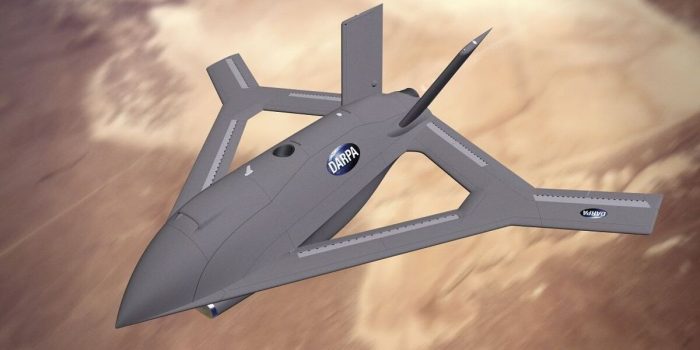DARPA has recently awarded a contract to Aurora Flight Sciences to construct a revolutionary full-scale aircraft named the X-65, marking a significant leap in aerospace technology. The X-65 is designed to test a groundbreaking system that replaces traditional moving control surfaces with Active Flow Control (AFC) actuators utilizing jets of air for precise control.
Conventional aircraft control involves a complex interplay of various surfaces such as flaps, slats, ailerons, spoilers, elevators, and rudder. The AFC technology aims to streamline this process by employing an array of nozzles on the airfoil edges.

These nozzles expel compressed air, altering air pressure and modifying airflow over the airfoil. This innovative approach allows the AFC system to control roll, pitch, and yaw of the aircraft without the need for heavy and expensive mechanical control surfaces.
The X-65, developed as part of DARPA’s Control of Revolutionary Aircraft with Novel Effectors (CRANE) program, will have a distinctive diamond-shaped design to enhance strength. Notably, it will incorporate both AFC and conventional mechanical control systems during testing to ensure safety and generate a baseline for comparative analysis. As the tests progress, the mechanical controls will be gradually phased out, giving way to the AFC system.

The modular design of the X-65 facilitates quick modifications, and it operates without a crew. With a weight exceeding 7,000 lb (3,175 kg) and a wingspan of 30 ft (9 m), the aircraft is expected to achieve speeds of approximately Mach 0.7, resembling a military training jet. This similarity ensures that the test data derived from the X-65 can be readily applied to real-world scenarios.
Aurora Flight Sciences has initiated the construction of the X-65, with expectations for the aircraft to be unveiled early next year. If successful, the implications of AFC technology could be transformative. By eliminating the need for heavy control surfaces, engineers could significantly enhance aircraft performance by redirecting the weight savings towards constructing lighter and sturdier airframes.

This might lead to the development of aircraft with longer, more efficient wings, potentially evolving to the point where the entire aircraft is enveloped in a frictionless layer of air, reducing drag and enhancing aerodynamic efficiency.
Dr. Richard Wlezien, DARPA’s program manager for CRANE, expressed excitement about the project, emphasizing the opportunity to witness the fruition of early work in fluid dynamics. The prospect of an AFC X-plane represents a groundbreaking development in aerospace engineering, opening doors to more efficient and streamlined aircraft designs.


